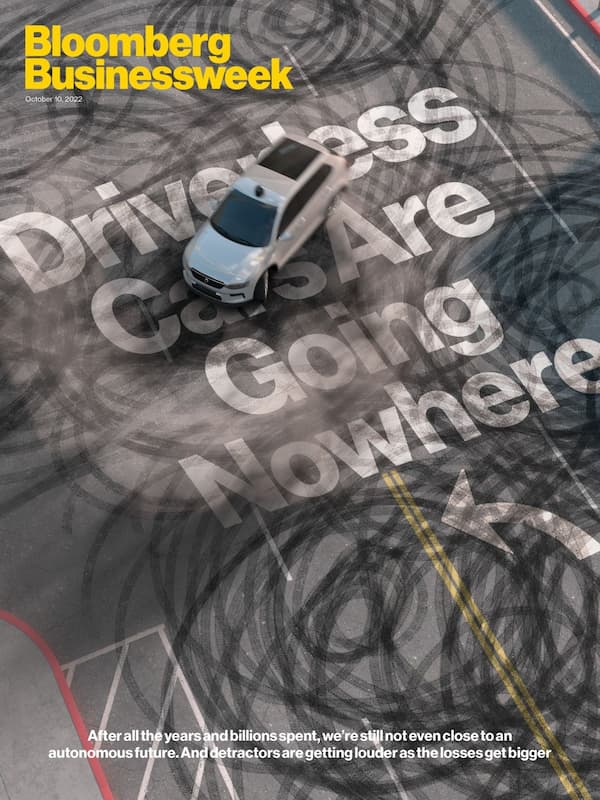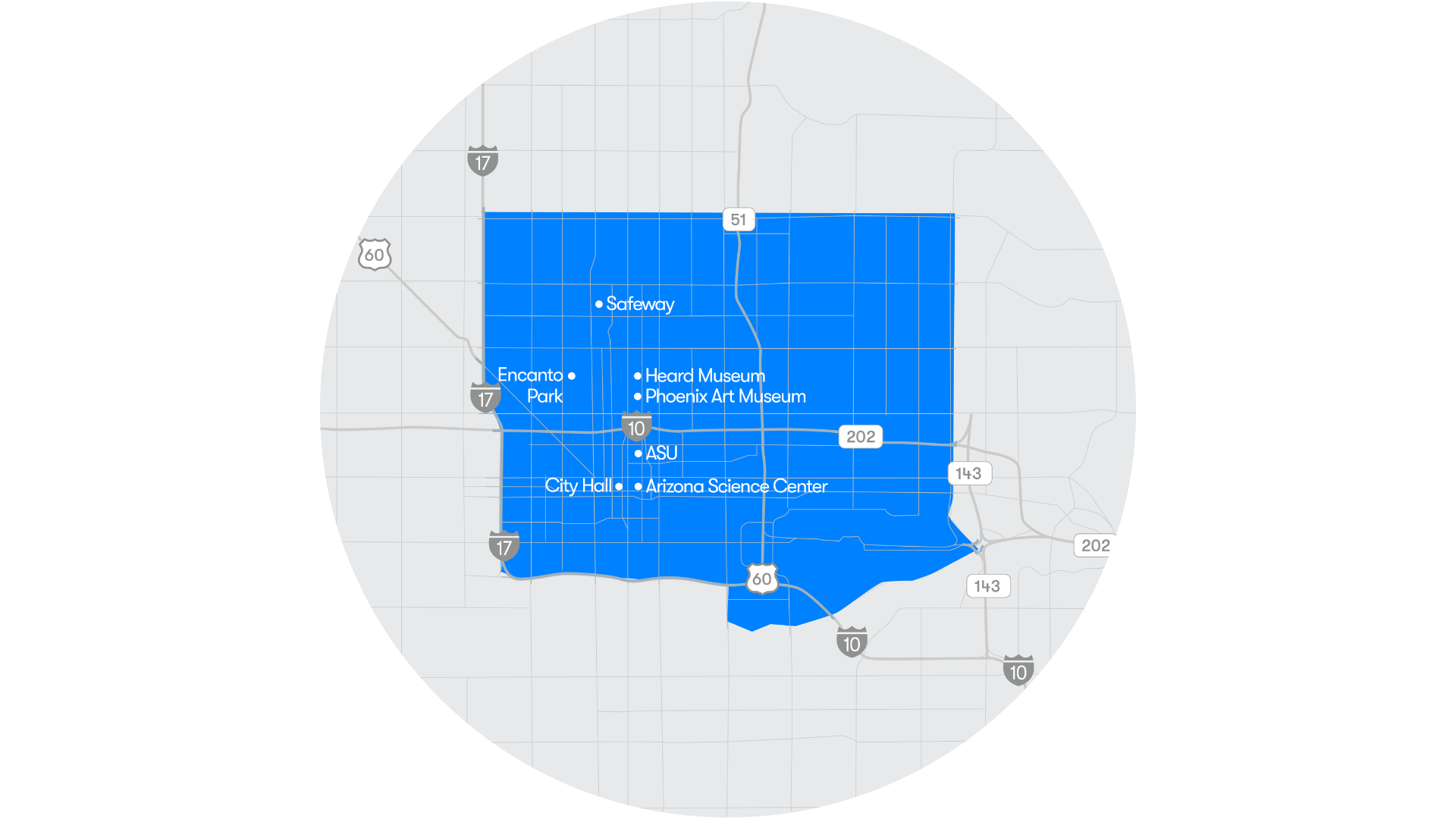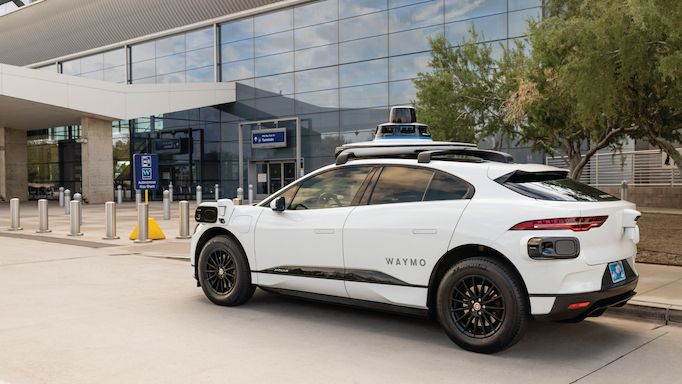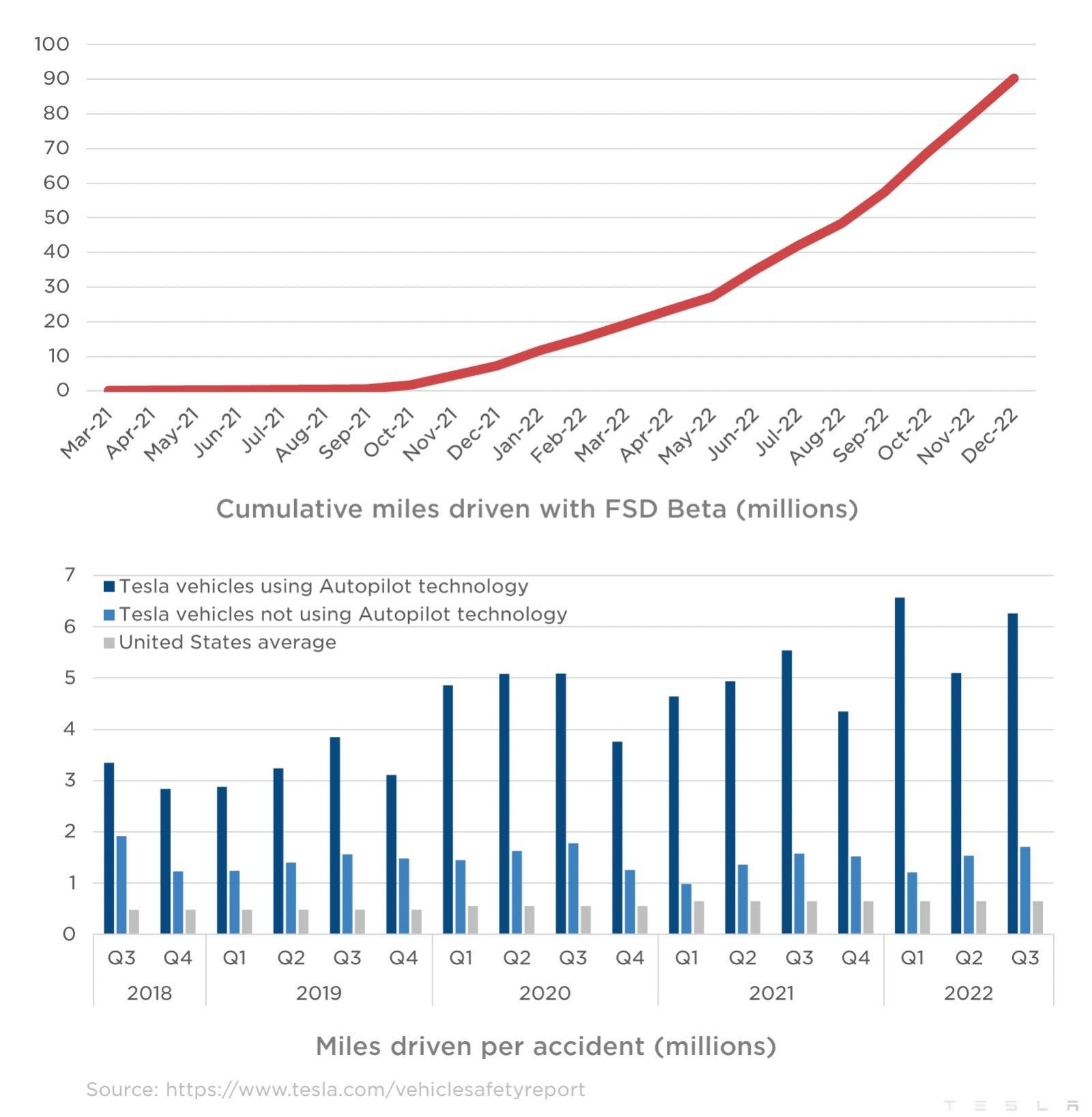
💡 Optimist's Edge: Self-driving cars are almost here
💡 In 20 years humans will not be allowed to drive cars on regular roads, because computers by then will drive so much better. This will bring massive change, and lots of new opportunities. The time to start thinking about this is NOW.
Share this story!
Sign up for our free weekly newsletter with fact-based optimistic news on technology, science and human progress.
📉 What people think
Many are pessimistic that self-driving cars are happening. Definitely not soon, probably not in the next decades, and maybe never.
Bloomberg captured the pessimism in this cover story: "...we're still not even close to an autonomous future..."

📈 Here are the facts
- The goal is to get to fully autonomous driving. The level where you are so confident in the car's abilities that you can remove the steering wheel.
- Fully autonomous driving is not an easy problem to solve. On the contrary, it is very hard. The computer in the car has to understand its surroundings perfectly. Which means it has to see, by using vision or other means like radar. Really weird things can happen. Like when people dress up to look like traffic lights (true story!) A human driver would also be confused, but soon see that the traffic lights are humans, and laugh. That is not as easy for a computer.
- There are two main approaches to solving self-driving. We'll call them the Waymo way and the Tesla way.
- The Waymo way is to create detailed maps and knowledge about a specific area. They started with Phoenix and have now also expanded to San Francisco. There the cars can drive without a driver. But put the same cars down in New York, or in a rural area, and they won't get far.

- For the Waymo way, the cars need more expensive equipment to interpret their environment. Tesla tror de kan klara det med bara kameror.

- The Tesla way is to teach the car to understand its surroundings, and being able to drive anywhere. You can put the car down anywhere on Earth and it should be fine.
- What you need for either solution to work is lots of data and really good machine learning to train the AI that is doing the driving.
- Tesla has by far the most data. Almost all Tesla cars collect data every time they are driven. 400,000 of those cars are in the Full Self-Driving beta. These cars drive much themselves, with the driver ready to take over. A lot of random things happen when 400,000 cars drive around, and this information is used to teach the cars to drive better and better.
- Which company, Waymo or Tesla, has the best AI engineers is hard to say. Both companies are very likely top-notch, which means the data is managed in a useful way.
- How close are we? That is very hard to say. But the conditions for success are there. Getting to the level where are so confident that we can remove the wheel and the car can drive anywhere on Earth is probably several years away. But a car that can drive itself 99,99 percent of the time on most roads is likely here before 2030.
- The exact year is hard to pin down now, but it is very likely this is happening in the next few years. It is very unlikely we would have to wait several decades, or longer, for cars to drive themselves.
💡 Optimist's Edge
💡 In 20 years humans will not be allowed to drive cars on regular roads, because computers by then will drive so much better.
Even if it's hard to predict the exact year we will get to complete self-driving, now is the time to start preparing for it. When it happens, the world will change dramatically. In the last hundred years, no other physical product has had a bigger impact on the society and environment we live in than the car. When those cars start driving themselves, society, cities and roads will change.
Also, this won't happen overnight. It is a gradual process of the cars getting better and better at driving. We are already starting to see the early benefits, like fewer crashes.

👇 How to get the Optimist's Edge
Sit down (or stand up, walk, run) and think. What will happen when cars drive themselves?
- When there is no need to have people strapped down with seatbelts, two in the front and three in the back – how will people travel?
- What will we do in the car, and what products or services will we need?
- Do roads need to change, and how?
- How do we change policy to make the transition to self-driving faster and smoother?
- What can we do to relieve fears and stress about riding in a self-driving car?
- When a self-driving car crashes and kills someone, what can we do so the news media doesn't escalate that into a panic and fear of the new? (Self-driving cars will crash sometimes, but very much less often than human-driven cars that kill over 1 million people every year.)
- Go through every aspect of cars, driving, and the function of cars today, and based on your knowledge, education, or expertise, think about what will change and what opportunities it will create.
Mathias Sundin
Editor-in-Chief
You now have an advantage because you have gained this knowledge before most others –